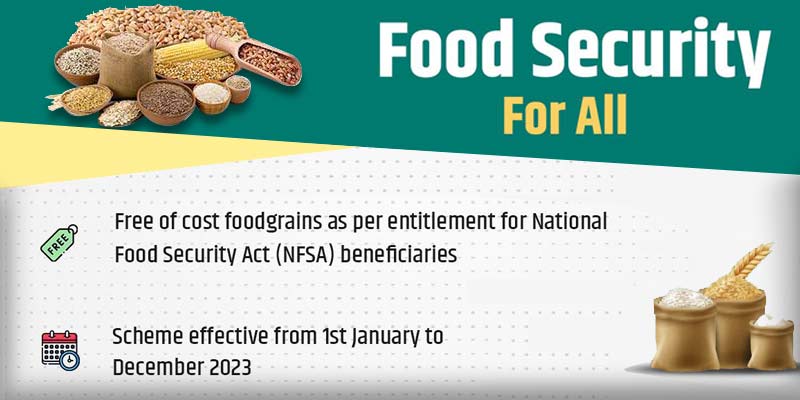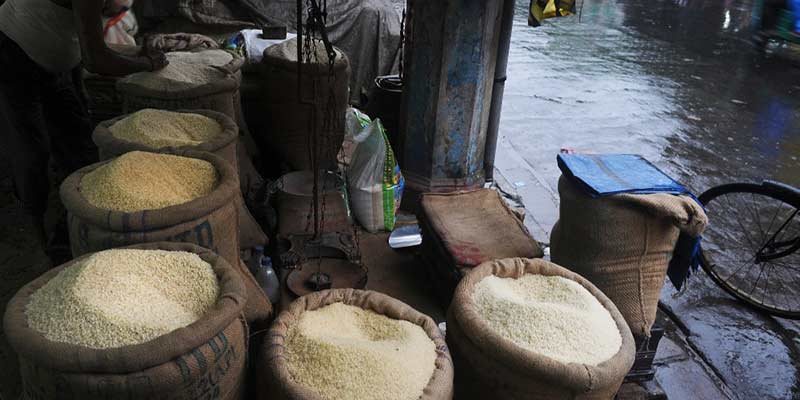- India
- Dec 24
Explainer / National Food Security Act
The government has decided to provide free foodgrains to 81.35 crore people for one year under the National Food Security Act (NFSA) at an estimated cost of Rs 2 lakh crore.
Currently, the beneficiaries covered under the NFSA pay Rs 1-3 per kg.
Under the Act, foodgrain is allocated at 5 kg per person per month for priority households category and at 35 kg per family per month for Antodaya Anna Yojna (AAY) families at highly subsidised prices of Re 1, Rs 2 and Rs 3 per kg for coarse cereals, wheat and rice, respectively.
With the Cabinet decision, beneficiaries under NFSA will get foodgrains free of cost for one year till December 2023.
The decision comes days ahead of the Pradhan Mantri Garib Kalyan Anna Yojana (PMGKAY) ending on December 31, 2022.
National Food Security Act, (NFSA) 2013
• Though the Indian Constitution does not have any explicit provision regarding right to food, the fundamental right to life enshrined in Article 21 of the Constitution may be interpreted to include the right to live with human dignity, which may include the right to food and other basic necessities.
• Though the issue of ‘food security’ at the household is continuously being addressed by the government since long, through the Public Distribution System and the Targeted Public Distribution System, the enactment of the National Food Security Act, (NFSA) 2013 on July 5, 2013 marked a paradigm shift in the approach to food security from welfare to rights based approach.
• The Act legally entitles up to 75 per cent of the rural population and 50 per cent of the urban population to receive subsidised foodgrains under Targeted Public Distribution System.
• About two-thirds of the population therefore is covered under the Act to receive highly subsidised foodgrains.
• Under NFSA, subsidised food grains are distributed at Rs 3 per kg for rice, Rs 2 per kg for wheat and Rs 1 per kg coarse grains to beneficiaries.
• As a step towards women empowerment, the eldest woman of the household of age 18 years or above is mandated to be the head of the household for the purpose of issuing ration cards under the Act.
• The Act is being implemented in all states/UTs, and on an all India basis, out of maximum coverage of 81.35 crore persons, around 80 crore persons have been covered under NFSA at present for receiving highly subsidised foodgrains.
• The identification of beneficiaries by states/UTs is a continuous process, which involves exclusion of ineligible/fake/duplicate ration cards and also exclusion on account of death, migration, etc and inclusion on account of birth as also that of genuine left-out households.
• One of the guiding principles of the Act is its life-cycle approach wherein special provisions have been made for pregnant women and lactating mothers and children in the age group of 6 months to 14 years, by entitling them to receive nutritious meal free of cost through a widespread network of Integrated Child Development Services (ICDS) centres, called Anganwadi Centres under ICDS scheme and also through schools under Mid-Day Meal (MDM) scheme.
• Higher nutritional norms have been prescribed for malnourished children up to 6 years of age.
• Pregnant women and lactating mothers are further entitled to receive cash maternity benefit of not less than Rs 6,000 to partly compensate for the wage loss during the period of pregnancy and also to supplement nutrition.
• In case of non-supply of the entitled quantities of foodgrains or meals to entitled persons under NFSA, such persons shall be entitled to receive such food security allowance from the concerned state government to be paid to each person, within such time and manner as may be prescribed by the central government.
Manorama Yearbook app is now available on Google Play Store and iOS App Store


